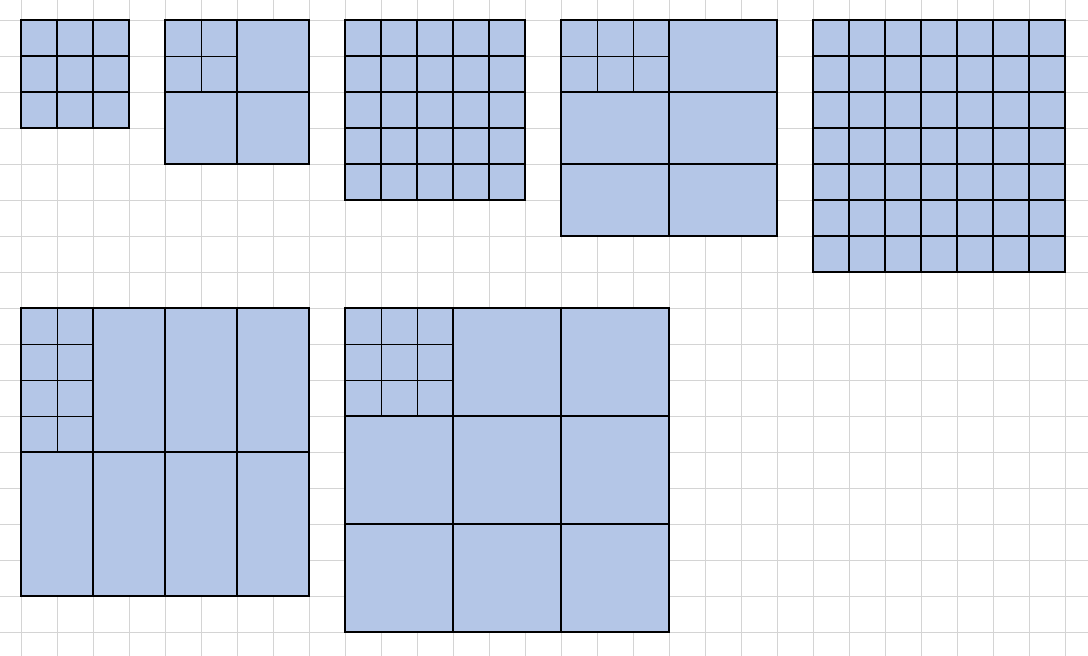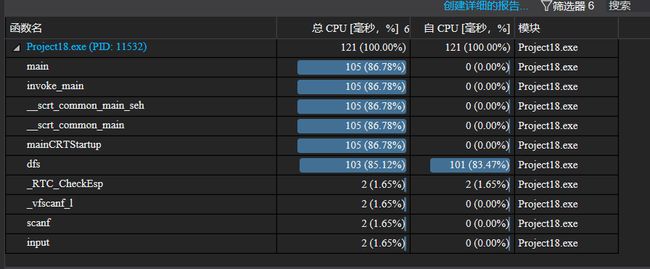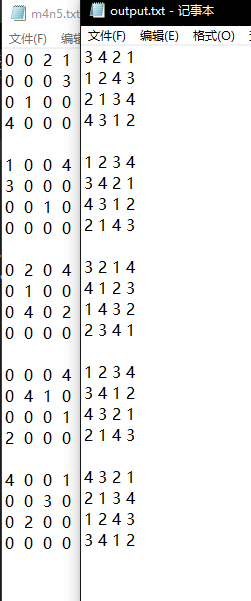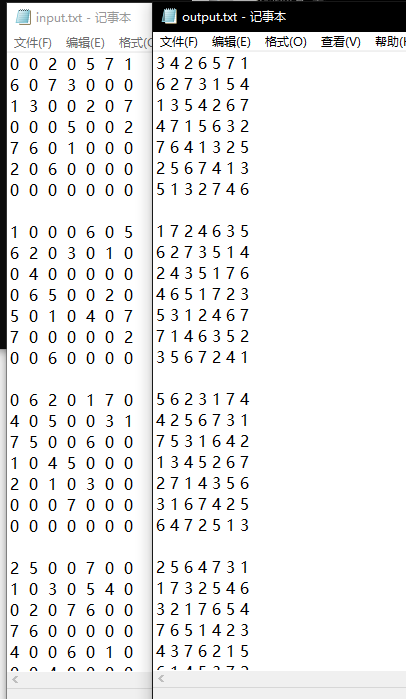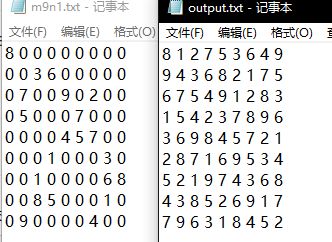准备阶段
1、github地址
2、PSP表格
| psp2.1 | 预估耗时(分钟) | 实际耗时(分钟) |
|---|---|---|
| 计划 | 30 | 30 |
| 估计这个任务需要多少时间 | 20 | 15 |
| 开发 | 150 | 120 |
| 需求分析 (包括学习新技术) | 240 | 300 |
| 生成设计文档 | 20 | 30 |
| 设计复审 | 10 | 10 |
| 代码规范(为目前的开发制定合适的规范) | 120 | 120 |
| 具体设计 | 30 | 30 |
| 具体编码 | 240 | 180 |
| 代码复审 | 20 | 15 |
| 测试(自我测试,修改代码,提交修改) | 120 | 240 |
| 报告 | 30 | 60 |
| 测试报告 | 30 | 50 |
| 计算工程量 | 20 | 30 |
| 事后总结,并提出过程改进计划 | 60 | 60 |
| 合计 | 1140 | 1290 |
开始阶段
1、思考
百度百科简介:
数独盘面是个九宫,每一宫又分为九个小格。在这八十一格中给出一定的已知数字和解题条件,利用逻辑和推理,在其他的空格上填入1-9的数字。使1-9每个数字在每一行、每一列和每一宫中都只出现一次,所以又称“九宫格”。
对于从来没有接触过数独的我来讲,这无疑是一个非常、非常、非常难的题目,因为我连最基本的数独规则都不清楚。即使它只有三条判断逻辑,但是解一个九宫格数独,还是需要一定的时间的。
2、思路
首先判断、利用三个bool数组直接获得合法性结果。
if(row[x][i] == false && col[y][i] == false && little_shudu[area][i] == false)
如此之后,我们可以得到一个方格是否能进行填入的结果。
得到方块的合法性之后,我们用DFS进行遍历、回溯
shudu[x][y] = i;
row[x][i] = true;
col[y][i] = true;
if(gx != 1 || gy != 1)
little_shudu[area][i] = true;
dfs(index + 1,maxscan,jie,gx,gy);
shudu[x][y] = 0;
row[x][i] = false;
col[y][i] = false;
if(gx != 1 || gy != 1)
little_shudu[area][i] = false;3、模块
1、输入模块
由于要求是要从input.txt中输入,所以输入模块如下:
void input(int x,int gx,int gy)
{
memset(row,false,sizeof(row));
memset(col,false,sizeof(col));
memset(little_shudu,false,sizeof(little_shudu));
for(int i = 0 ; i < x ; i++){
for(int j = 0 ; j < x ; j++){
fscanf(fp, "%d", &shudu[i][j]);
int temp_i = i / gx;
int temp_j = j / gy;
int area = temp_i * gx + temp_j;
if(shudu[i][j] != 0){
int temp = shudu[i][j];
row[i][temp] = true;
col[j][temp] = true;
if(gx != 1 || gy != 1 ){
little_shudu[area][temp] = true;
}
}
}
}
}2、输出模块
通过输入文件得到数独并进行求解,然后将其输出一个output.txt文件
void print(int x)
{
for(int i = 0 ; i < x ; i++)
{
for(int j = 0 ; j < x ; j++)
{
if(j == x - 1) {
fprintf(fp, "%d\n", shudu[i][j]);
}
else {
fprintf(fp, "%d ", shudu[i][j]);
}
}
}
fprintf(fp, "\n");
}3、求解模块
即先检查合法性,后进行计算填入。
void dfs(int index , int maxscan,int jie,int gx , int gy)
{
if(index >= maxscan)
{
print(jie);
return ;
}
int x = index / jie ;
int y = index % jie ;
int temp_i = x / gx;
int temp_j = y / gy;
int area = temp_i * gx + temp_j;
if(shudu[x][y] == 0)
{
for(int i = 1 ; i <= jie ; i++)
{
if(row[x][i] == false && col[y][i] == false && little_shudu[area][i] == false)
{
shudu[x][y] = i;
row[x][i] = true;
col[y][i] = true;
if(gx != 1 || gy != 1)
little_shudu[area][i] = true;
dfs(index + 1,maxscan,jie,gx,gy);
shudu[x][y] = 0;
row[x][i] = false;
col[y][i] = false;
if(gx != 1 || gy != 1)
little_shudu[area][i] = false;
}
}
}
else{
dfs(index + 1,maxscan,jie,gx,gy);
}
}4、性能测试
感觉好像还行,不明觉厉。
5、运行测试
(中间省略5 6 8)
#include "stdafx.h"
#include
#include
#include
#include
#include
#include
#include
#include 